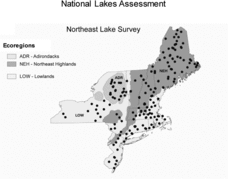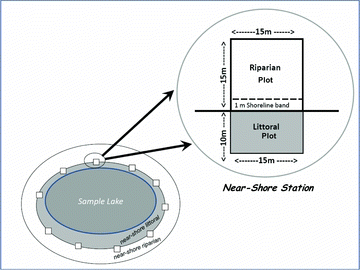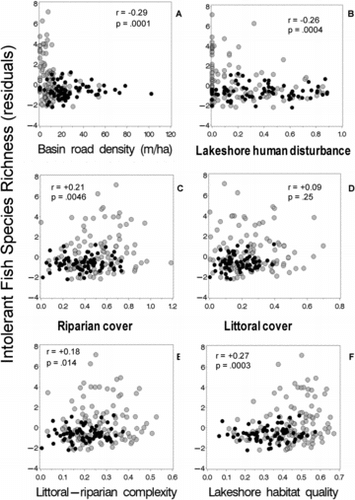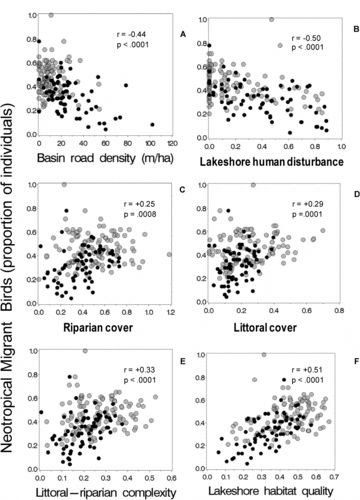Figures & data


Table 1 Correlations of EMAP Northeast Lake Survey biotic metrics and habitat indices with catchment land use and geoclimatic variables. Spearman r with absolute values >0.30 have p < 0.0001 (Bonferroni-adjusted p < 0.0015); those between 0.25 and 0.30 have p < 0.001 (adjusted p < 0.15). Parentheses denote r values before watershed area correction. Data from US EPA's EMAP probability survey of 185 lakes during the spring (birds) and summer (fish and habitat) seasons of 1992–1994 (179 lakes with complete set of variables used here). Correlations >|0.40| are bold.




